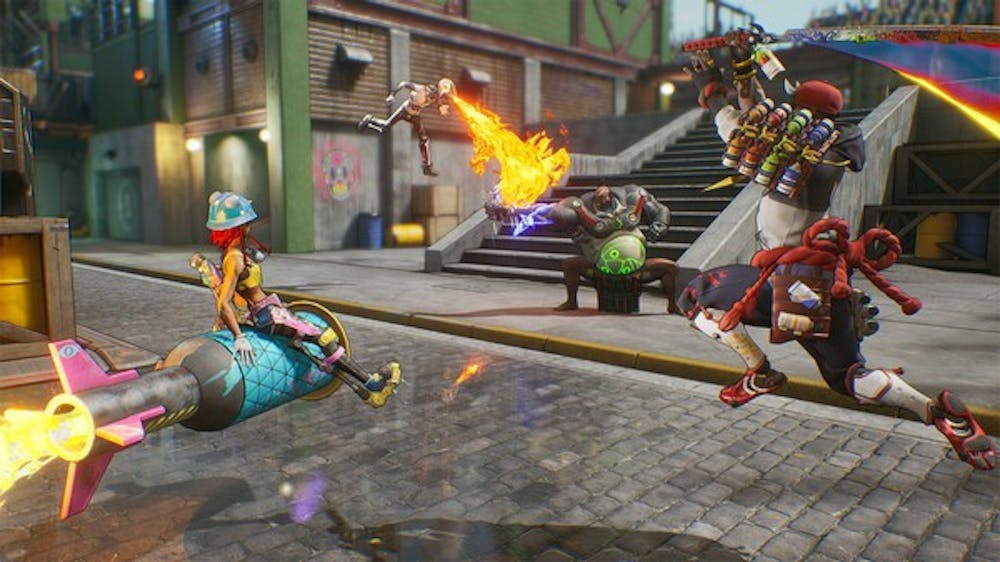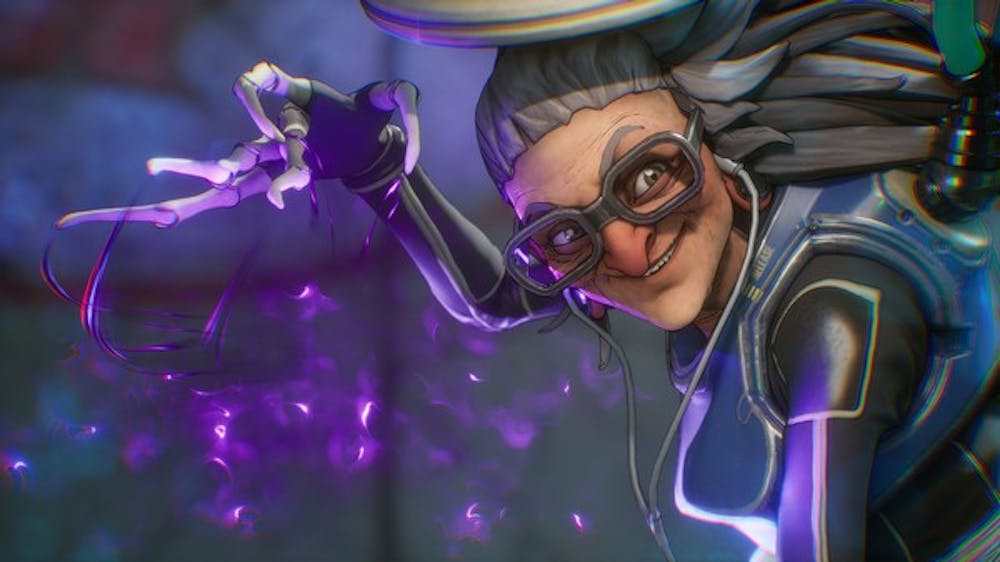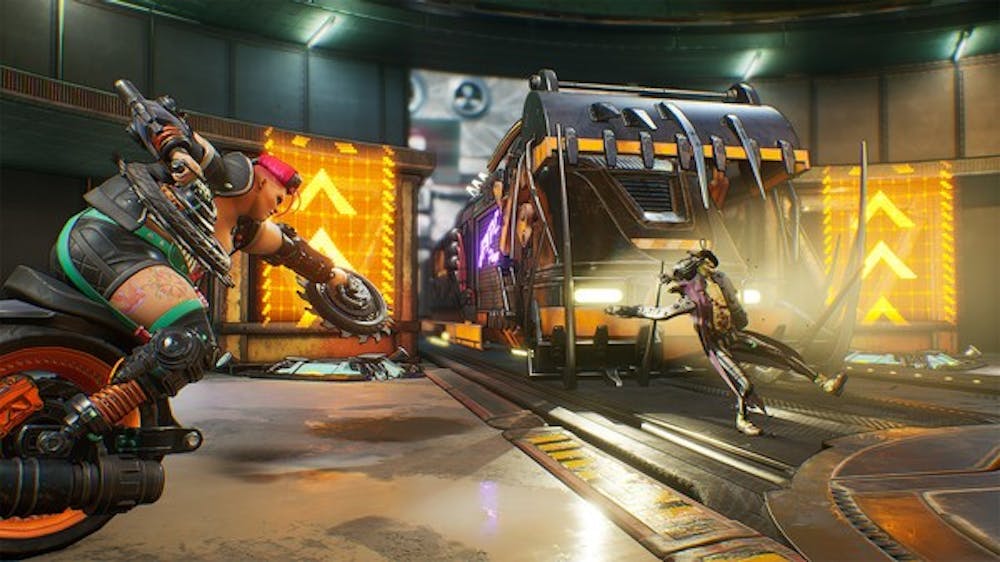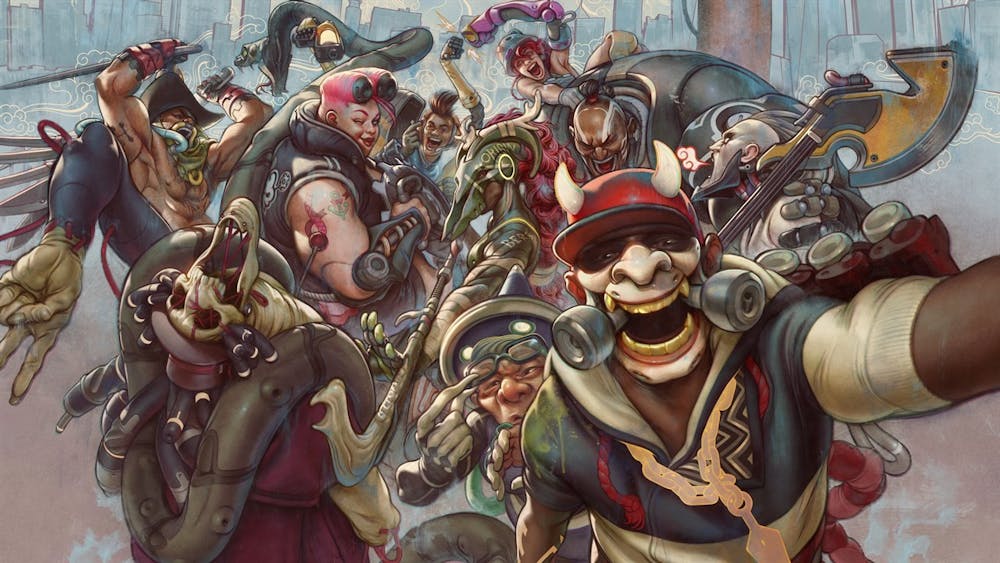Disclaimer: This review is of the Xbox One version of the game and was conducted on an Xbox One X.
Much like the recent battle royale boom following the meteoric rise of Epic Games’ Fortnite into the stratosphere, the subgenre of first person shooter (FPS) games dubbed “hero shooters” stand as a lesson to game developers about how to properly—and improperly—market a title to the masses. After the rise and immediate fall of Evolve back in 2015, multiple studios from Blizzard to Gearbox decided it was their turn at the plate and took some risky swings at creating the next big triple-A title in a genre of gaming that had only just arrived on current-generation consoles like the Playstation 4 and Xbox One.
What these companies would soon find out is that much like the rest of the FPS scene, there is only room at the top for a few big fish who join the feeding frenzy and a lot of bottom feeders arriving late only to pick at the scraps. Titans like Overwatch, Rainbow Six Siege, and Apex Legends are still treading water because they have been pushed afloat by the corpses of many other failed titles like Lawbreakers, Battleborn, Gigantic, and the aforementioned Evolve. Simply put, it is much better to bet early and cash out first then come late to the game and leave with next to nothing.
While the mania surrounding the battle royale boom has settled down for the time being, the movement around hero shooters continues to press onward five years later. Riot Games, in their first foray outside the traditional PC multiplayer online battle arena (MOBA) market, is heavily investing in their new independent project (IP): Valorant. Additionally, the recently Microsoft-acquired Ninja Theory has thrown their hat in the ring with the release of 4v4 team fighter: Bleeding Edge. Much like its predecessors, this new IP in the hero shooter genre underwhelms in gameplay, and unfortunately does not exude enough potential to grant it necessary longevity, even with one of the most impressive art styles of any modern shooter.
Innovative gameplay mechanics pull their punches

Image from Steam
Team hero shooters have a unique problem to solve that many other gaming genres, and even some other FPS titles, don’t have. They are required to create an experience that offers intuitive, competitive gameplay that rewards a player’s skill while also offering a fair amount of fluid and creative elements that make the game addictive and fun. From the moment that Bleeding Edge was revealed, Creative Director Rahni Tucker and her team were bombarded with questions like if the melee components of the game will allow it to stand out from the crowd or if the relationships between different play styles will work well together. Their resounding answer was that while the combat is spectacular, especially in tandem with friends, the balance across each character will allow for deep counter-play and a level playing field. Sadly, it is in this department that Bleeding Edge fails the most.
For starters, while the focus on melee combat over typical shooting is innovative, it comes with a massive learning curve for some and an elementary style of play for others. The former comes into context when considering the vast number of status effects and customization of character abilities; before a match even begins, you can select from two different ultimate abilities as well as a plethora of modifications that can be swapped to increase the effectiveness of certain other abilities. This becomes an issue when you actually get into the game and realize just how underpowered your attacks feel, no matter the combination of extra effects. Combos and specials never feel satisfying and even if a ridiculous combo is set up for you to hack away at an opponent’s health bar, it ultimately takes too long and you end up sacrificing too much of your own health.

Image from Steam
In turn, this causes the focus on team mechanics to break down fairly quickly. Previews of the game mentioned that reliance on teamwork was necessary to succeed and without that relationship, you are doomed. In practice, however, it does not work out that way in the slightest. Both game modes, “objective capture” and “power collection,” are played in one of five arenas that remain the exact same no matter what the match is set up for. Whereas other games in the genre play out on a linear map that allows the tide of battle to flow between different locations with their own distinct challenges and opportunities, Bleeding Edge leaves the entire map free to interact with and explore. Because of this, the experience is not fashioned in a way that rewards playing competitively as a team and strangely makes more sense as a “lone wolf” title in the vein of For Honor.
Surprising personality hampered by poor design
Thankfully Bleeding Edge partially makes up for those mistakes in gameplay with a ridiculous amount of originality in its art style. Everything, including the characters, their attack animations, menus, arenas, and more, feels unique and highly stylized. Representing the character of each fighter primarily through design is a tall order, and the artists at Ninja Theory delivered on making them stand out from the competition. Each one exudes their own personality through combat and aesthetic qualities alone, and they do not feel like rehashes of other heroes like in Overwatch, at least from a design perspective. With subtle cell-shading and plenty of visual detailing, characters pop out on screen whether they are in the heat of battle or just waiting in a customization menu.

Image from Steam
However, not every item has been checked off the list when it comes to proper design. There are a ridiculous amount of lag problems that drastically slow the pace of the game and result in damage seemingly coming out of nowhere. Additionally, matchmaking is frustrating across any game mode. It is not easy to tell if an enemy team is a part of a larger party or made of individual players, but either way, the skill gap seems miles wide from the very first interactions in the arena.
Also, aesthetic customization is way off the mark. Most of the hoverboards or skins offered early on are just recolors of previous models and offer nothing fresh or appealing. Additionally, the modding system is impressive but does not make that much of a difference considering you cannot change mid-match and are unable to tell the exact mods enemy players are using to make effective counterpicks.
Longevity sliced by a double-edged sword
What really matters in the success of competitive MOBAs is whether or not the title has enough charm and substantial backing to remain relevant and draw in fans. For Bleeding Edge, the potential to succeed in the long run counts on a lot of factors that the developers can do little to control, like community engagement or a robust, maintained player base weeks to months from launch. Thankfully, since Ninja Theory has become a part of Xbox Game Studios, their latest title is destined to remain on Game Pass for a while. This continued push will more than likely mean a continued entry of new players and early adopters renewing their time in the arena.
Once those new players become engrossed in the game for just a short period of time, they will discover how little it has to offer. Bleeding Edge is charming for all the wrong reasons. While it is a memorable time to share with friends online, the frustration and lack of any competitive flair mean that nobody is hooked immediately. The subpar melee combat and unique visuals can only carry this title so far in the current state of hero shooters. After a long streak of seemingly endless matches that leave players exhausted no matter if they win or lose, most fans will either flock to the competitors’ superior product or just start up another title from the boatload of other, more substantive experiences across Game Pass for PC and console.
Featured Image: Microsoft
Images: Steam
Sources: Eurogamer, Metro, Game Informer, PC Gamer
For more entertainment related content, visit us at Byte BSU!




















